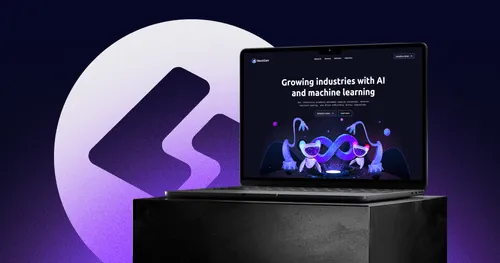


Pop-ups
Overlays used to capture attention and prompt actions like newsletter sign-ups or special offers, designed to enhance user experience without being intrusive.
What are Pop-ups?
Pop-ups are interactive elements that appear over a website’s content, typically in a small window or overlay. They are designed to capture the user’s attention and often serve various purposes, such as displaying advertisements, promoting offers, collecting email addresses, or providing notifications. Pop-ups can be triggered by specific user actions (e.g., clicking a link or button), by time delays, or when a user is about to leave the website (exit-intent pop-ups).
Pop-ups are commonly used in digital marketing to increase conversions, engage users, and collect leads. Despite their effectiveness, they can be controversial due to potential usability and user experience issues.
Are Pop-ups Good or Bad for SEO?
Pop-ups can have both positive and negative effects on SEO:
Potential Negative Effects on SEO:
- Intrusive Interstitials: Google has penalized websites with intrusive interstitials or pop-ups that hinder user access to content, particularly on mobile devices. These can lead to lower rankings if they negatively impact user experience.
- Increased Bounce Rates: If pop-ups are too aggressive or disruptive, they can lead to higher bounce rates as users leave the site without engaging with the content.
- Slower Page Load Times: Pop-ups can add additional scripts and resources, potentially slowing down page load times, which can negatively impact SEO performance.
Potential Positive Effects on SEO:
- Enhanced User Engagement: When used strategically, pop-ups can increase user engagement by encouraging actions like sign-ups, downloads, or purchases, potentially leading to improved user metrics.
- Improved Conversion Rates: Effective pop-ups can contribute to higher conversion rates by capturing leads and driving sales, which can indirectly benefit SEO by increasing site authority and relevance.
Are Pop-ups Bad for UX?
Pop-ups can have a significant impact on user experience (UX), both positively and negatively:
Negative Impact on UX:
- Disruption: Pop-ups can interrupt the user's flow and distract from the primary content, leading to frustration and annoyance.
- Aggressiveness: Overly aggressive pop-ups, such as those that cover the entire screen or appear too frequently, can lead to a negative user experience.
- Accessibility Issues: Poorly designed pop-ups can hinder accessibility for users with disabilities, particularly those using screen readers or keyboard navigation.
Positive Impact on UX:
- Timely Information: When used appropriately, pop-ups can provide valuable information or offers at the right time, enhancing the user's experience.
- User Engagement: Engaging pop-ups can encourage users to take specific actions, such as signing up for a newsletter or downloading a resource, adding value to their visit.
Are Pop-ups Effective?
Pop-ups can be highly effective when implemented thoughtfully and strategically:
- Increased Conversions: Pop-ups are known for their ability to boost conversion rates by capturing leads, promoting offers, and encouraging actions.
- Lead Generation: They are effective tools for collecting email addresses and building mailing lists, especially when offering valuable incentives like discounts or free resources.
- Targeted Messaging: Pop-ups allow for personalized and targeted messaging, enabling businesses to deliver relevant content or offers to specific audience segments.
However, the effectiveness of pop-ups depends on factors such as timing, relevance, design, and user targeting. Poorly executed pop-ups can lead to user frustration and disengagement, undermining their intended benefits.
Pop-ups and Accessibility
Accessibility is an important consideration when using pop-ups, as they can pose challenges for users with disabilities. Here are some key accessibility considerations:
- Keyboard Navigation: Ensure that pop-ups are fully navigable using a keyboard, allowing users to interact with the pop-up content and close it easily.
- Screen Reader Compatibility: Pop-ups should be compatible with screen readers, providing descriptive labels and appropriate focus management to help users understand and navigate the content.
- Focus Management: When a pop-up appears, the focus should shift to the pop-up content, preventing users from interacting with background elements. Upon closing, focus should return to the previous element.
- Clear Exit Options: Provide clear and accessible options for closing the pop-up, such as a prominent "close" button or an easy-to-use escape key functionality.
- Avoid Overlays that Block Content: Ensure that pop-ups do not obscure important content or hinder access to the rest of the website.
Best Practices for Pop-ups
To maximize the benefits of pop-ups while minimizing their drawbacks, consider the following best practices:
- Timing and Frequency: Use pop-ups sparingly and time them appropriately to avoid disrupting the user's experience. Consider triggering pop-ups based on user behavior, such as exit intent or after a certain period of engagement.
- Relevance and Value: Ensure pop-up content is relevant and provides value to the user, such as personalized offers or useful information.
- Design and UX: Design pop-ups to be visually appealing and easy to interact with, ensuring they are not too intrusive or disruptive.
- A/B Testing: Conduct A/B testing to evaluate the effectiveness of different pop-up designs, placements, and triggers to optimize performance.
- Respect User Preferences: Offer users the option to dismiss pop-ups easily and respect their preferences by not showing the same pop-up repeatedly.
By following these best practices, businesses can effectively use pop-ups to enhance user engagement and achieve their marketing goals without compromising user experience or accessibility.








